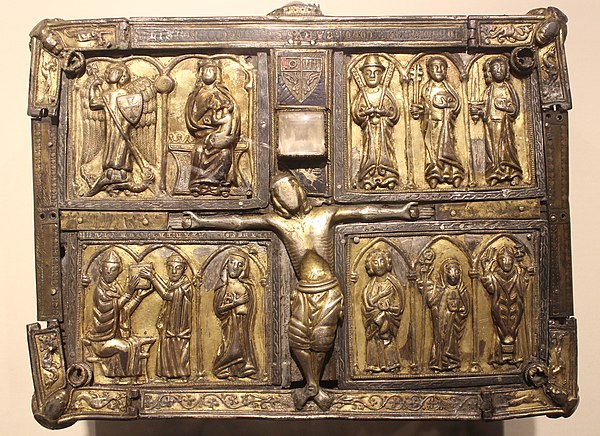Bimaran casket
Videos
Page
The Bimaran casket or Bimaran reliquary is a small gold reliquary for Buddhist relics that was removed from inside the stupa no.2 at Bimaran, near Jalalabad in eastern Afghanistan.

The Bimaran casket or reliquary on display in the British Museum, with a depiction of the Buddha, surrounded by Brahma (left) and Śakra (right).

The Stupa Nb.2 at Bimaran, where the reliquary was excavated. Drawing by Charles Masson.

Detail of the Buddha, where the rare posture and light dress are visible.

The Bimaran casket, illustrated by Charles Masson: view in volume, flattened view of a half portion of the casket, and bottom.
Reliquary
Videos
Page
A reliquary is a container for relics. A portable reliquary may be called a fereter, and a chapel in which it is housed a feretory or feretery.

Reliquary Shrine, French, c. 1325–50, The Cloisters, New York

Inside the shrine of St. Boniface of Dokkum in the hermit-church of Warfhuizen in the Netherlands. The little folded paper on the left contains a bone fragment of Saint Benedict of Nursia, the folded paper on the right a piece of the habit of St. Bernard of Clairvaux. The large bone in the middle (about 5 cm in length) is the actual relic of St. Boniface.

Reliquary Cross, French, c. 1180

Domnach Airgid, Irish, 8th–9th century, added to 14th century, 15th century, and after